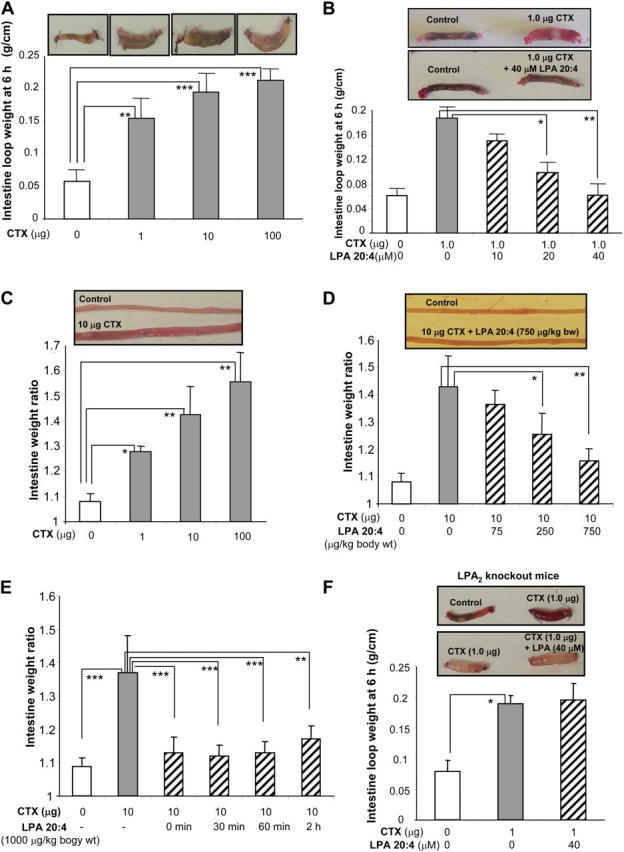Figure 5.

LPA inhibits CFTR-dependent intestinal fluid secretion induced by CTX. (A) Representative mouse ileal loops 6 h after luminal injection with CTX (pictures). The bar graphs (bottom) show the averaged loop weight (n = 3). (B) Representative ileal loops 6 h after luminal injection of CTX without or with LPA 20:4 (pictures). The bar graphs (bottom) show the averaged loop weight (n = 3–5). (C) Representative segments of mouse whole small intestine from open-loop model 6 h after oral gavage of CTX (pictures). Bar graphs show averaged fluid accumulation in the whole small intestine. Data shown as entire intestine weight before/intestine weight after luminal fluid removal (n = 3–4). (D) Representative segments of mouse small intestine from open-loop model 6 h after simultaneous oral gavage of CTX and LPA 20:4. Bar graphs show averaged fluid accumulation in the whole small intestine (n = 3–4). (E) CTX-induced intestinal fluid secretion after subsequent oral administration of LPA 20:4 in mouse open-loop model. Oral administration of LPA 20:4 was performed at different time points after CTX feeding (n = 5–8). (F) Representative ileal loops 6 h after luminal injection of CTX without or with LPA 20:4 in LPA2 knockout mice (pictures). The bar graphs (bottom) show the averaged loop weight (n = 5–6). *P < 0.05; **P < 0.01; ***P < 0.001.
